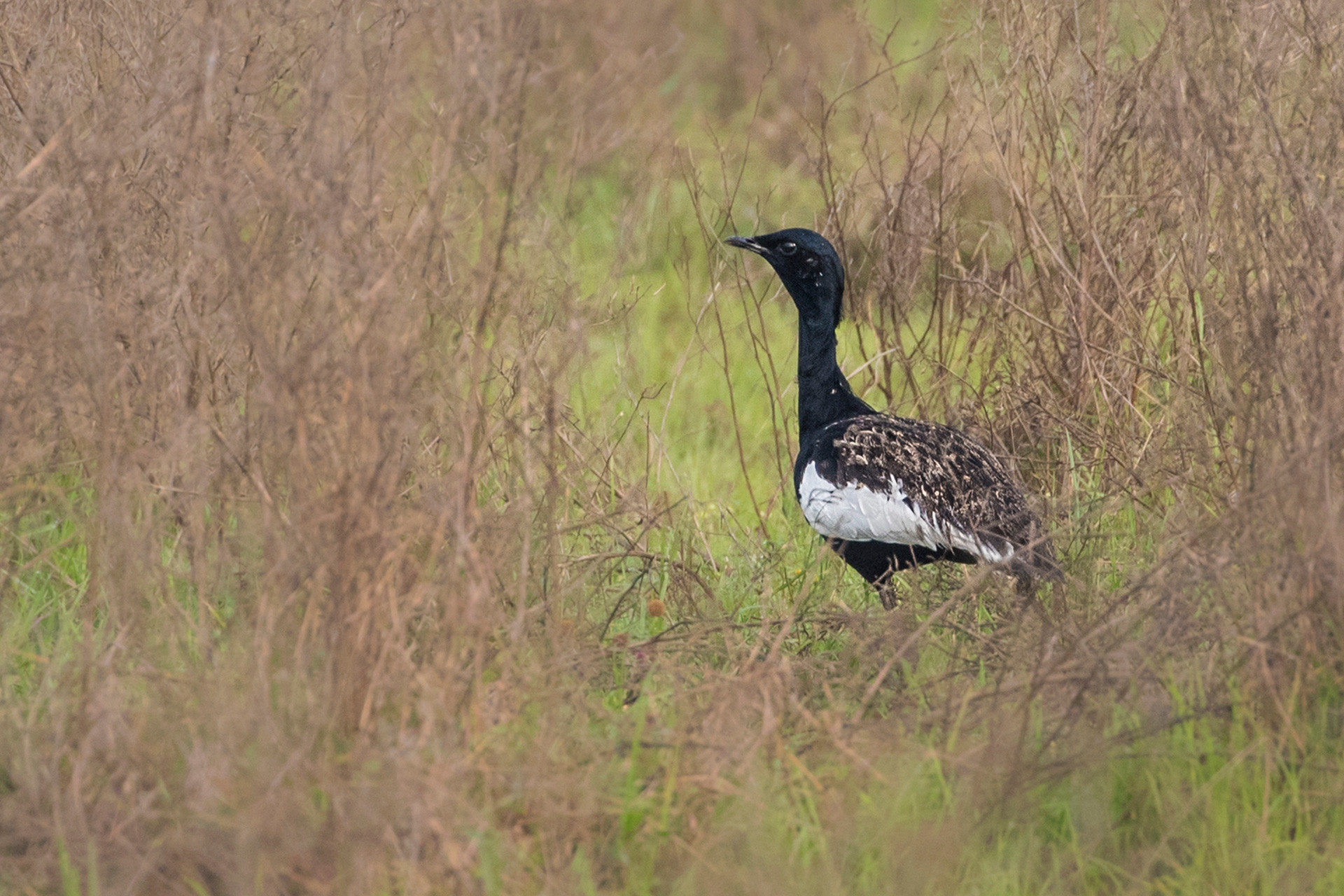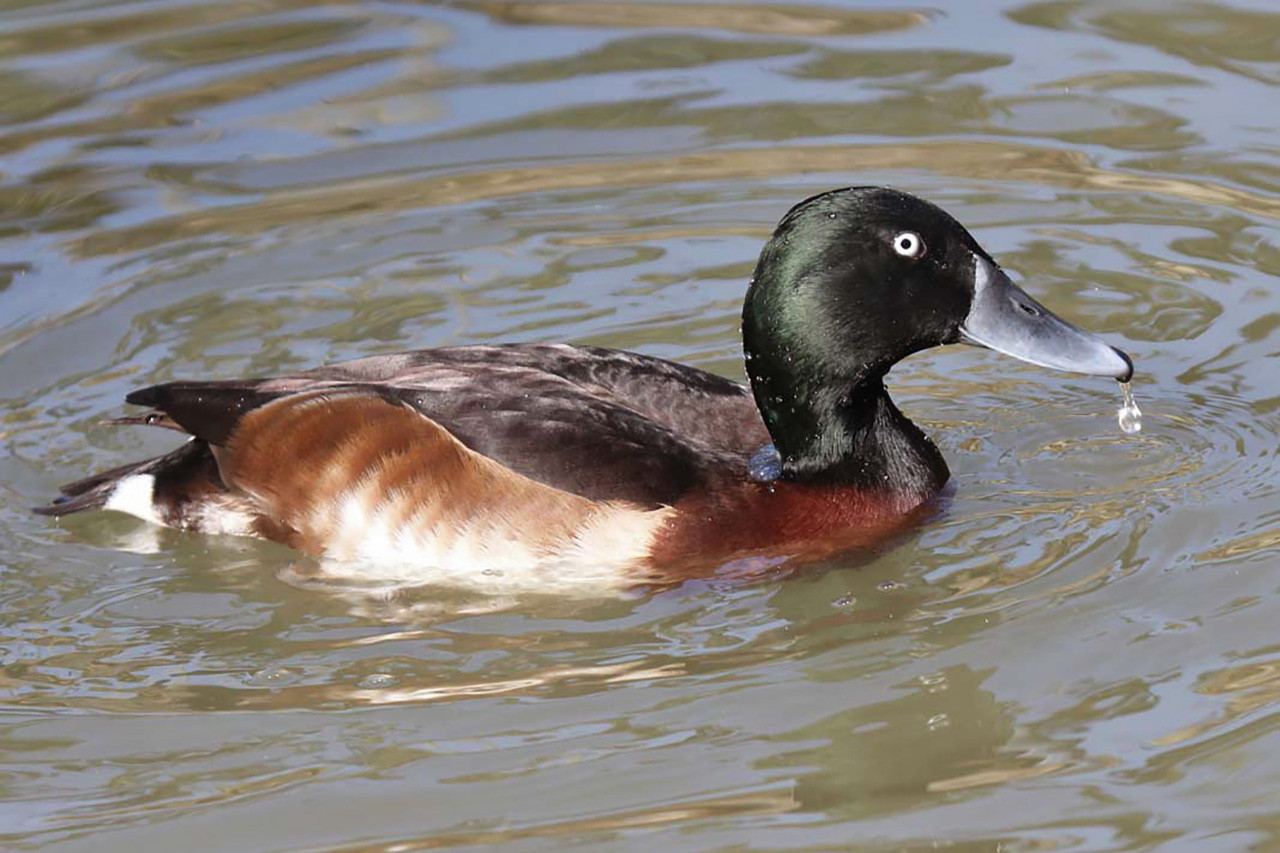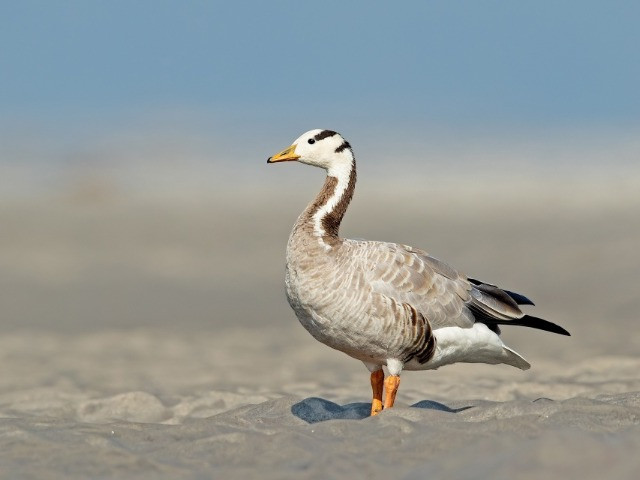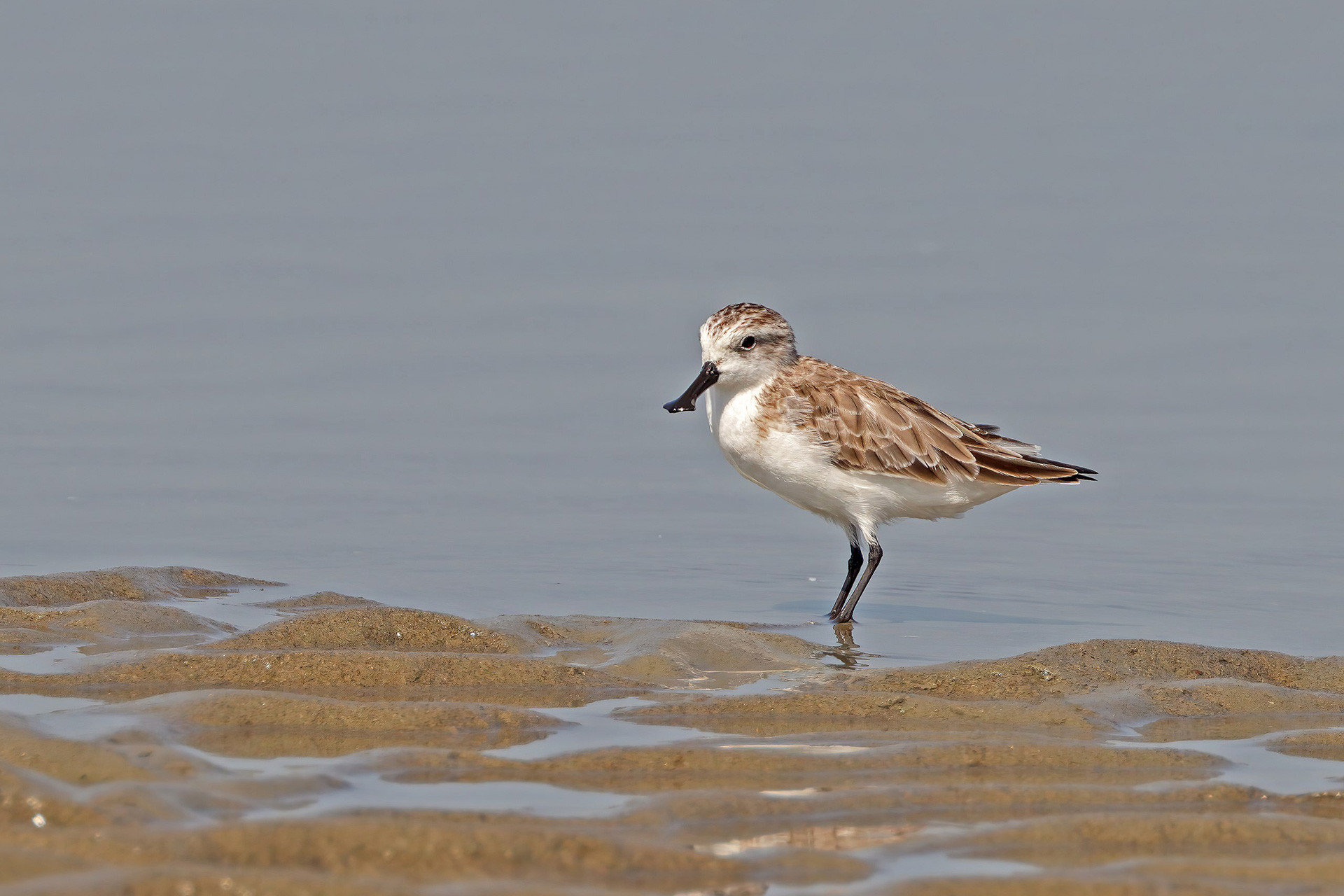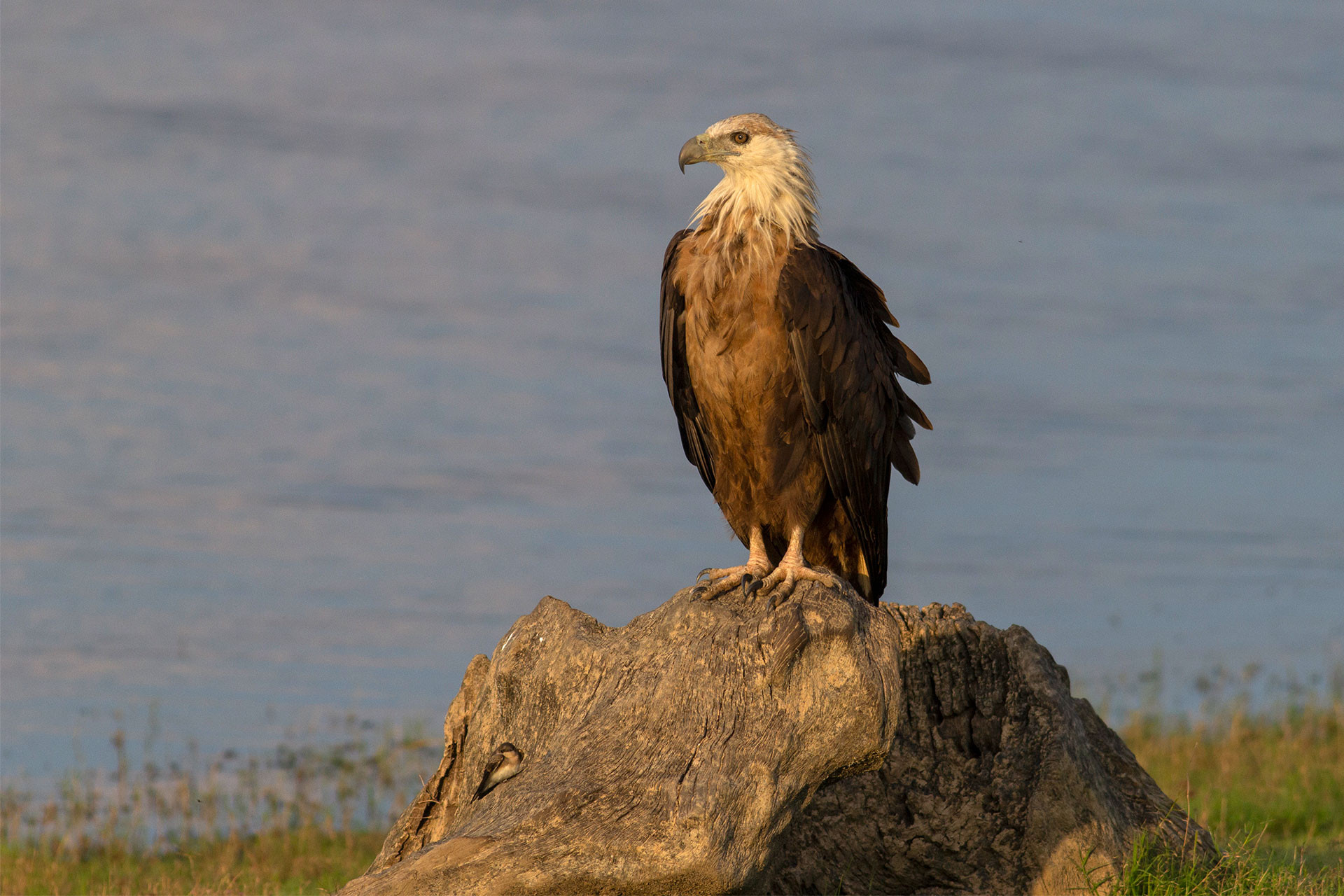The State of India’s Birds 2020 report classified 101 bird species as of High Conservation Concern, highlighting the need for their immediate attention. Of the roughly 1,220 regularly occurring species of birds in India, 280 are long-distance migrants, 116 are within-subcontinent migrants, and the rest are resident birds that are either sedentary or show local movement.
Making up the tail-end of the Central Asian Flyway, the Indian subcontinent with its rich habitats serves as the primary wintering grounds for migrant birds. As per the report, migratory species (both long-distance and within-subcontinent) showed steeper declines than resident species. And, alongside raptors and habitat specialists, migratory shorebirds showed the greatest decline.
Here, we look at the migratory (long-distant, within-subcontinent and resident) birds found in India that are marked as Critically Endangered or Endangered on the IUCN Red List of Threatened Species.
Sociable Lapwing (Vanellus gregarius)
IUCN Red List Status: Critically Endangered
Sociable Lapwings mainly breed in Kazakhstan and Russia and disperse to the nearby countries of Afghanistan, Iran, Iraq, Saudi Arabia, Azerbaijan etc. They migrate to India, Pakistan and Sudan during winter. Sociable Lapwings reside in grasslands, wetlands and deserts. They are considered the rarest and most threatened bird species in the Eurasian steppes. Illegal hunting along the route of migration, destruction of nests/eggs by grazing animals and predation by other bird species are some of the major contributing factors that have led to the decline in their populations.
Bengal Florican (Houbaropsis bengalensis)
IUCN Red List Status: Critically Endangered
The rarest of the birds in the Bustard family, Bengal Floricans are divided into two populations. One mainly breeds in Cambodia and migrates to India and Nepal during the non-breeding seasons, while the other population resides in India and Nepal and is mainly found in the grasslands along the Himalayan foothills. Tracking studies have revealed that the Cambodian population also moves between India and Nepal during the non-breeding season, eventually returning to the same breeding ground. Bengal Floricans breed in floodplains and their preferred habitats are grasslands. Conversion of grasslands for agriculture and developmental projects and modification through drainage or overgrazing are some of the most crucial threats to the species. Bengal Floricans are also hunted for food and as a sport.
Siberian Crane (Leucogeranus leucogeranus)
IUCN Red List Status: Critically Endangered
Siberian Cranes are the third most threatened species in the Crane family. These birds breed in the tundra regions of western and eastern Russia. The breeding population from western Russia used to winter in India (mainly Bharatpur) and is now found in Iran. They were last sighted in Keoladeo National Park in 2001. Siberian Cranes are highly dependent on wetlands and marshlands as habitats. Degradation of wetlands, conversion for agricultural activities and hydroelectric projects and illegal hunting have severely affected the populations, especially in wintering sites.
Baer's Pochard (Aythya baeri)
IUCN Red List Status: Critically Endangered
Baer's Pochards breed in parts of Russia and China and migrate to Japan, India and southern China during winter. They are found near freshwater habitats like lakes and require rich vegetation around the water bodies. Habitat destruction and pollution of water bodies due to agricultural activities are some of the biggest threats faced by the species. Local populations are also impacted by hunting and egg collection.
You may also like to read
Great Indian Bustard (Ardeotis nigriceps)
IUCN Red List Status: Critically Endangered
One of the heaviest flying birds on the planet, Great Indian Bustards migrate locally after the monsoon season. They are usually found in arid and semi-arid grasslands, but their microhabitats depend on their activity. They require areas with sparse vegetation for roosting and dense vegetation for nesting and foraging. Historically, their numbers were impacted by hunting. But now, they also face other threats like habitat destruction due to developmental activities, mining and linear intrusion and collision with power lines.
Spoon-billed Sandpiper (Calidris pygmaea)
IUCN Red List Status: Critically Endangered
Spoon-billed Sandpipers breed in Russia and migrate to China, India, Bangladesh, Myanmar, Vietnam and Thailand. They have specific breeding habitats, which are usually lagoon spits with low vegetation, so the chicks can feed on vertebrates. They also require specific vegetation for survival such as lichens and birches. Their wintering habitats are tidal mudflats. Habitat destruction and alteration for developmental projects are some of the biggest threats to Spoon-billed Sandpipers.
Pallas’s Fish-Eagle (Haliaeetus leucoryphus)
IUCN Red List Status: Endangered
Also known as the Pallas's Sea Eagle, the bird breeds in Russia, Mongolia, India, China and several other neighbouring countries. Being partially migratory, a few central Asian populations migrate to northern parts of India. The Pallas's Fish-Eagle is found near water bodies, mainly large rivers and lakes. Wetland degradation and the conversion of habitats for agriculture and developmental usage have greatly impacted the population of this bird in India. Pallas’s Fish-Eagles need large trees near rivers and lakes to build nests. With increased deforestation, such suitable nesting sites are also dwindling, adding to their woes.


